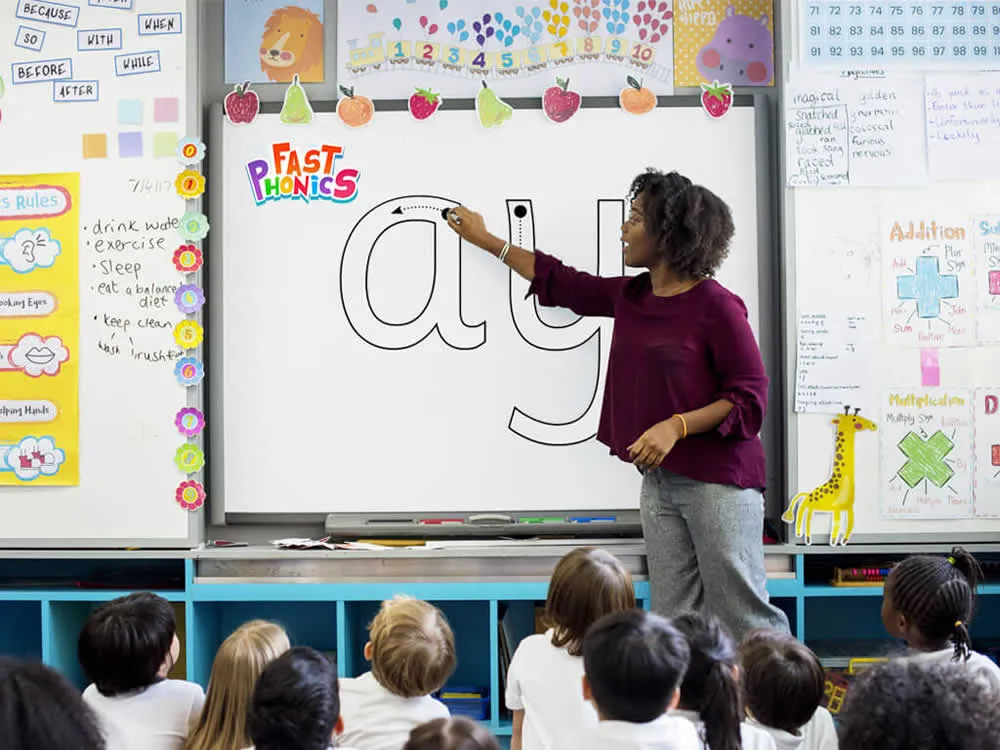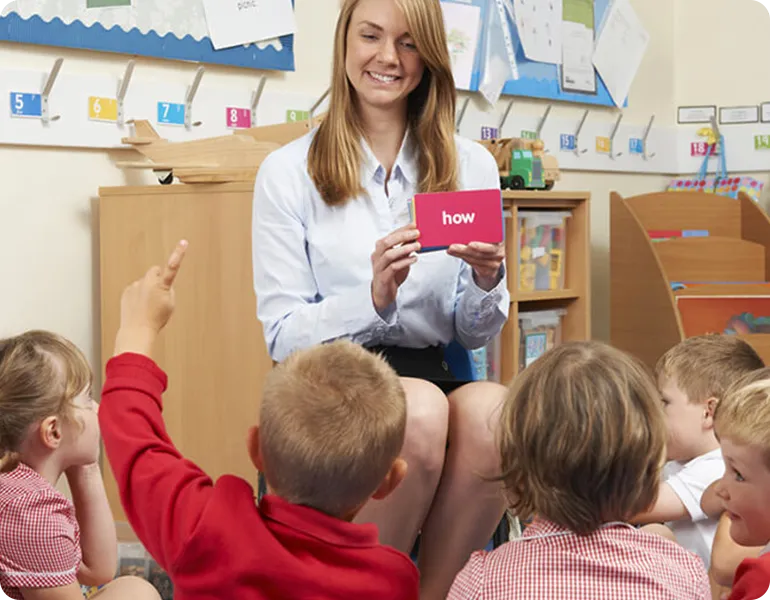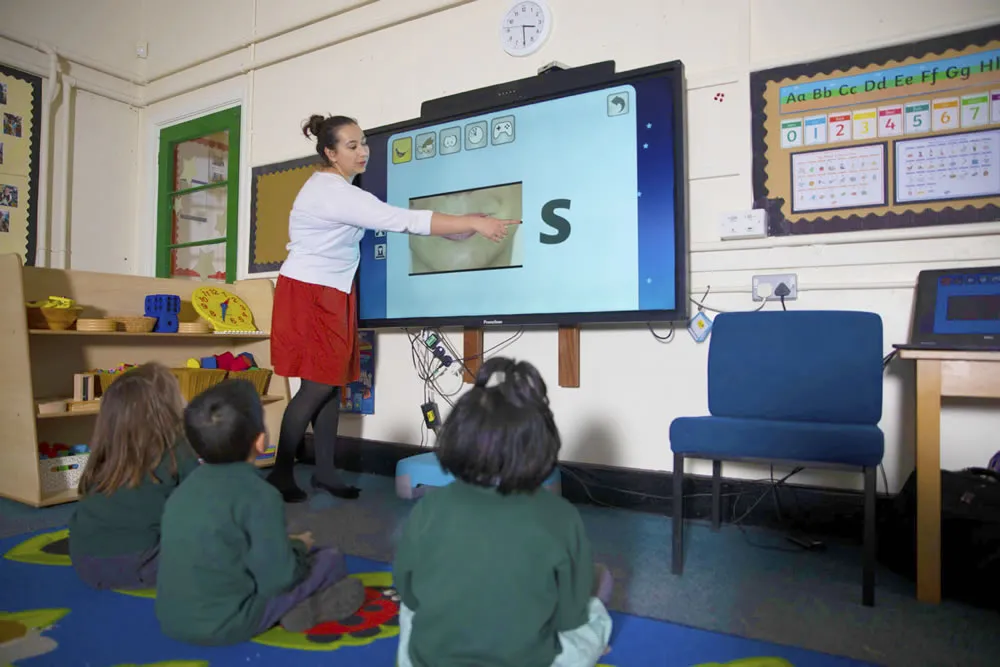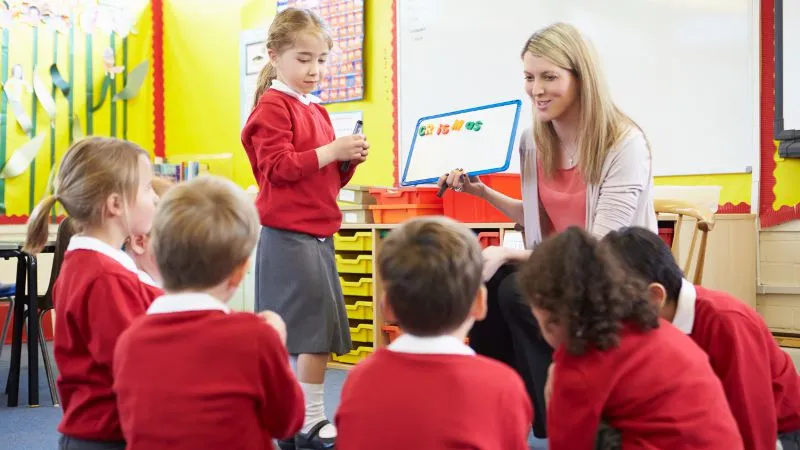
Source: learning.3plearning
Nothing beats the power of phonics when it comes to giving young learners the finest start possible in their educational journey. Children learn how to decode words through phonics, which also prepares them to become confident readers and writers.
The Vidhyanidhi Education Society understands the importance of Phonics Training for Early Years, and in this blog, we’re set to share the key insights:
Importance of Phonics
Phonics serves as the building block of literacy, helping children make the connection between letters and sounds.
The Early Years Edge
Introducing phonics at an early age enhances a child’s ability to read with fluency and understand text with clarity.
Methods and Techniques
Modern Phonics Training for Early Years employs a range of techniques that make learning fun, interactive, and effective.
Success Stories
Across the globe, countless Success Stories vouch for the effectiveness of early phonics instruction in transforming young learners into avid readers.
As we explore this subject of Phonics Training for Early Years, our goal is to arm parents, educators, and other key players with the knowledge they need to guarantee that every child has the chance to gain from learning this fundamental ability. Stay tuned as we explore the fascinating realm of phonics and give helpful tips, professional judgments, and tried-and-true tools to make phonics instruction fun and successful.

Source: learning
Benefits Of Synthetic Phonics
The following are the Benefits of Synthetic Phonics:
- Phonics emphasizes understanding the unique sounds each English letter makes.
- While letters might be named differently, their sounds often differ, making phonics a crucial bridge to understanding.
- By learning these letter sounds, children can more easily form and read words.
- Recognizing and dissecting sounds in words improves spelling abilities.
- This approach seamlessly integrates reading, writing, and spelling.
- Phonics, therefore, plays a vital role in language learning, emphasizing its significance in early education.
Career Opportunities for Phonics Teacher
Stepping into the field of phonics, especially under the guidance of the Vidhyanidhi Education Society (VES), unlocks a trove of professional Career Opportunities for Phonics Teacher.
Here’s a breakdown of the diverse avenues available for the discerning educator with formal Phonics Training for Early Years:
- Seed a thriving phonics-centric educational venture from the convenience of your home, balancing initial costs with promising revenues.
- As a private tutor, diversify your offerings and appeal by integrating phonics into your curriculum.
- Leverage your expertise by joining prestigious pre-schools and primary institutions keen on specialized phonics educators.
- Present-day school faculties can further their growth potential by seamlessly adding phonics to their teaching modules.
- International Phonics Training for Early Years academies consistently scout for knowledgeable phonics educators to uplift their training standards.
- Carve a niche as a phonics curriculum strategist or content creator for top-tier global educational organizations.
- Ascend to supervisory or managerial roles in education-centric establishments, courtesy of your phonics specialization.
- Serve as a beacon of hope for children requiring tailored learning approaches as a dedicated phonics facilitator or support mentor.
- Beyond career advancements, Phonics Training for Early Years helps harness phonics expertise to nurture linguistic excellence in their children.
Teach Phonics Online
For those aiming for a quality Teach Phonics Online course in India, VES is a standout choice.
Noteworthy highlights of online Phonics Training for Early Years include:
- Continuous intake for students.
- Pricing that respects your budget.
- Seamless onboarding.
- Global course accessibility.
- Minimal technical requirements: just internet access.
- Structured yet flexible course content.
- A robust, downloadable study package.
- Materials featuring an educator’s reference, diverse worksheets, attractive flashcards, and multi-faceted audio-video tools.
- Vibrant online course interactions.
- Seasoned educators leading the course.
- Unpressured assessment techniques.
- Transparent certification without learning mode details.
- Timely certificate dispatch to your location.
- Certificates recognized on international platforms.
Connect with our course expert at +919869546913 / +919869866277.
Download the detailed brochure Here.

Source: phonicspower
Syllabus For Phonics Training for Teachers
Based on thorough research, the Syllabus For Phonics Training for Teachers offers:
- Phonics in a Nutshell
- Diverse Phonics Training Programmes Explored
- Phonics and the Whole Language Approach Compared
- A Study of Letter Sounds and Creation
- Mastery in Blending and Breaking Words
- Delving into Consonant Blends
- A Deep Dive into Digraph Sounds
- Establishing the Line between Digraphs and Blends
- Highlighting Challenging Words
- Phonics Standards to Adhere to
- A Look at Vowel Variations and Spellings.
Structure Of Phonics Teachers Training Course
VES ensures a streamlined Structure Of Phonics Teachers Training Course, letting you focus on what truly matters:
- Say hello to our team
- Acquaint yourself with our vision
- Get on board
- Experience the Phonics Training for Early Years
- Go through the evaluation
- Celebrate your certification
- Pursue your Phonics passion
- Moment of elation!
Duration Of Phonics Training for Early Years
Duration Of Phonics Training for Early Years consists of a 3-hour session a day, with the full course being 18 hours spread across six days.
Eligibility For Phonics Training for Early Years
As an Eligibility For Phonics Training for Early Years, you must have a basic understanding of English.
Phonics Teacher Salary
The Phonics Teacher Salary is not set in stone. It varies based on the school’s location and compensation strategy, the teacher’s know-how, and what the market dictates. But with formal Phonics Training for Early Years, one can easily expect a five-figure income.
Phonics Course Fees
Phonics Course Fees depends upon the location and institution you are opting for.

Source: phonicshero
How to Teach Satpin?
“Satpin” refers to the first set of phonemes (or sounds) introduced in many Phonics Training programs to teach early reading and writing to children. “Satpin” stands for the sounds /s/, /a/, /t/, /p/, /i/, and /n/. Teaching “Satpin” can serve as the foundation for blending and segmenting simple words.
Here’s a step-by-step guide on How to Teach Satpin:
Introduce Phonemes Individually
- Sound Out the Phoneme: Make the sound for each letter clearly and accurately. For example, for “s,” you’ll want to avoid saying “suh” and instead emphasize the pure “ssss” sound.
- Use Actions: Actions can help children remember the sounds. For instance, you might pretend to slither like a snake for “s” or tap a tambourine for “t”.
- Show the Grapheme: Show the letter that represents the sound. This helps children make the association between the written letter and the sound it represents.
Use Visual Aids
- Flashcards with the letter on one side and a related picture on the other can be helpful.
- Videos or interactive apps that focus on Phonics Training can also be beneficial.
Blend Phonemes
- Once the children are familiar with individual sounds, you can begin blending them to form words. For example, using “satpin” you can form the words “sat,” “pin,” “pat,” “tap,” “nap,” and so on.
- Sound out each phoneme slowly and then speed up until you’re saying the whole word.
Segment Phonemes
- This is the opposite of blending. Take a word like “sat” and break it down: “ssss-a-t.”
Practice Writing
- Introduce letter formation alongside the phonemes. Encourage children to write each letter as they say the sound.
- Provide them with tracing worksheets to practice their handwriting.
Use Games and Activities
- Play games like “I Spy” using the initial sounds of objects. (“I spy something beginning with ‘p'”).
- Phonics bingo or matching games can also be enjoyable and educational.
- Engage children in sorting activities where they sort objects or pictures based on their initial sounds.
Reading Practice
- Provide children with simple books or sentences that primarily use “satpin” words.
- Encourage them to sound out and blend the phonemes to read the words.
Reinforce Regularly
- Repetition is key. Revisit these phonemes often and encourage children to practice them both in guided sessions and independently.
Extend with More Phonemes
- Once the children are confident with “Satpin,” you can introduce more phonemes gradually, expanding their phonetic knowledge.
Remember, the pace at which you introduce and practice these sounds will vary depending on the child’s familiarity with Phonics Training and their learning style. It’s crucial to make the learning process fun and engaging, so children remain motivated and interested.
Connect with our course expert at +919869546913 / +919869866277.
Download the detailed brochure Here.

Source: itac
How to Teach Phonics to Class 1?
It takes a planned strategy that integrates multisensory techniques, enjoyable activities, and regular practice to Teach Phonics to Class 1 pupils.
Here is a step-by-step tutorial on How to Teach Phonics to Class 1:
Understanding Phonics
- Before you teach, ensure you have a good understanding of what Phonics Training is – it’s the relationship between letters and sounds in a language.
Begin with Letter Sounds
- Start with teaching individual letter sounds, especially the consonants (e.g., b says /b/ as in bat, c says /k/ as in cat).
- Make use of flashcards with the letter on one side and a picture representing the sound on the other (e.g., ‘b’ and a ball).
Introduce Short Vowels
- Teach the short vowel sounds: /a/ as in apple, /e/ as in egg, /i/ as in igloo, /o/ as in orange, and /u/ as in umbrella.
CVC Words
- Once students are familiar with individual sounds, introduce consonant-vowel-consonant (CVC) words like ‘cat’, ‘dog’, and ‘sit’.
- Use magnetic letters, letter tiles, or cards to allow students to physically build and read CVC words.
Blending
- Teach students to blend sounds to read a word. For instance, for the word ‘cat’, they would blend the /c/ + /a/ + /t/ sounds.
Segmenting
- This is the reverse of blending. Ask students to break down a word like ‘dog’ into its sounds: /d/ + /o/ + /g/.
Introduce Digraphs and Blends
- After mastering individual sounds and CVC words, introduce digraphs (two letters that make one sound like ‘sh’, ‘ch’, ‘th’) and blends (two letters that sit together and maintain their sounds, e.g., ‘bl’ in ‘blend’).
Use Phonics Songs and Rhymes
- Engage students with songs, rhymes, and jingles that highlight different phonics patterns. This can make learning more enjoyable and memorable.
Interactive Games
- Games like bingo, memory matches, or board games can be used to reinforce phonetic patterns. Online resources and apps also offer interactive phonics games suitable for Class 1.
Reading Practice
- Offer students decodable books, which are designed for students learning phonics. They contain words that can be sounded out based on the phonics rules they’ve learned.
- Encourage frequent reading to apply their phonics knowledge.
Assessment
- Continuously assess students’ understanding through oral readings, worksheets, and one-on-one sessions.
Introduce Sight Words
- While the majority of words can be decoded using Phonics Training for Early Years, some words (often called sight words) do not follow typical phonics rules. Introduce these words separately and encourage students to recognize them on sight.
Consistent Practice
- Repetition is key. Examine and practice regularly to reinforce knowledge and skills.
Positive Reinforcement
- Celebrate successes, no matter how small. Positive reinforcement boosts confidence and encourages students to keep trying.
Multisensory Techniques
- Incorporate touch, movement, visual aids, and sound. For instance, let students trace letters with their fingers, stomp their feet as they say a sound, or use sand or shaving cream to write out words.
Remember, every student is different. Some may pick up phonics quickly, while others may need more time and practice. Stay patient, flexible, and responsive to each student’s needs.
What are the Beginning Sounds?
“Beginning Sounds” refers to the initial phonemes or sounds in words. In early literacy and phonics instruction, children need to recognize and differentiate between the Beginning Sounds of words, as this foundational skill can influence their ability to decode words and develop fluent reading abilities.
Following are the Beginning Sounds examples:
- The word “cat” has the beginning sound /k/.
- The word “pot” has the beginning sound /p/.
- The word “fish” has the beginning sound /f/.
It’s important for young learners to not only recognize these sounds when they hear them but also to be able to produce them when given a letter or letter combination. This is a critical step towards blending sounds to read words and segmenting words to spell them.
Educators and parents often use games, songs, flashcards, and other interactive activities to teach and reinforce beginning sounds to children. Recognizing beginning sounds helps set the stage for more advanced phonemic awareness skills and phonics instruction.
Set the tone for success in phonics with VES’s Phonics Training for Early Years!
Connect with our course expert at +919869546913 / +919869866277.
Download the detailed brochure Here.
FAQs
What are the examples of Phonics?
Examples of Phonics: Understanding that 'c' in 'cat' is /k/, 'sh' in 'ship' is /ʃ/, or 'oo' in 'moon' is /uː/.
How to teach ee and ea sounds?
To teach 'ee' and 'ea' sounds: Use word lists (e.g., 'tree', 'beach'), visuals, and repetitive practice. Differentiate between similar sounds with context.
How to learn reading English with Phonics?
Learn reading English with Phonics: Start with basic sounds, blend to form words, practice with sentences. VES makes learning English with Phonics enjoyable and effective!



